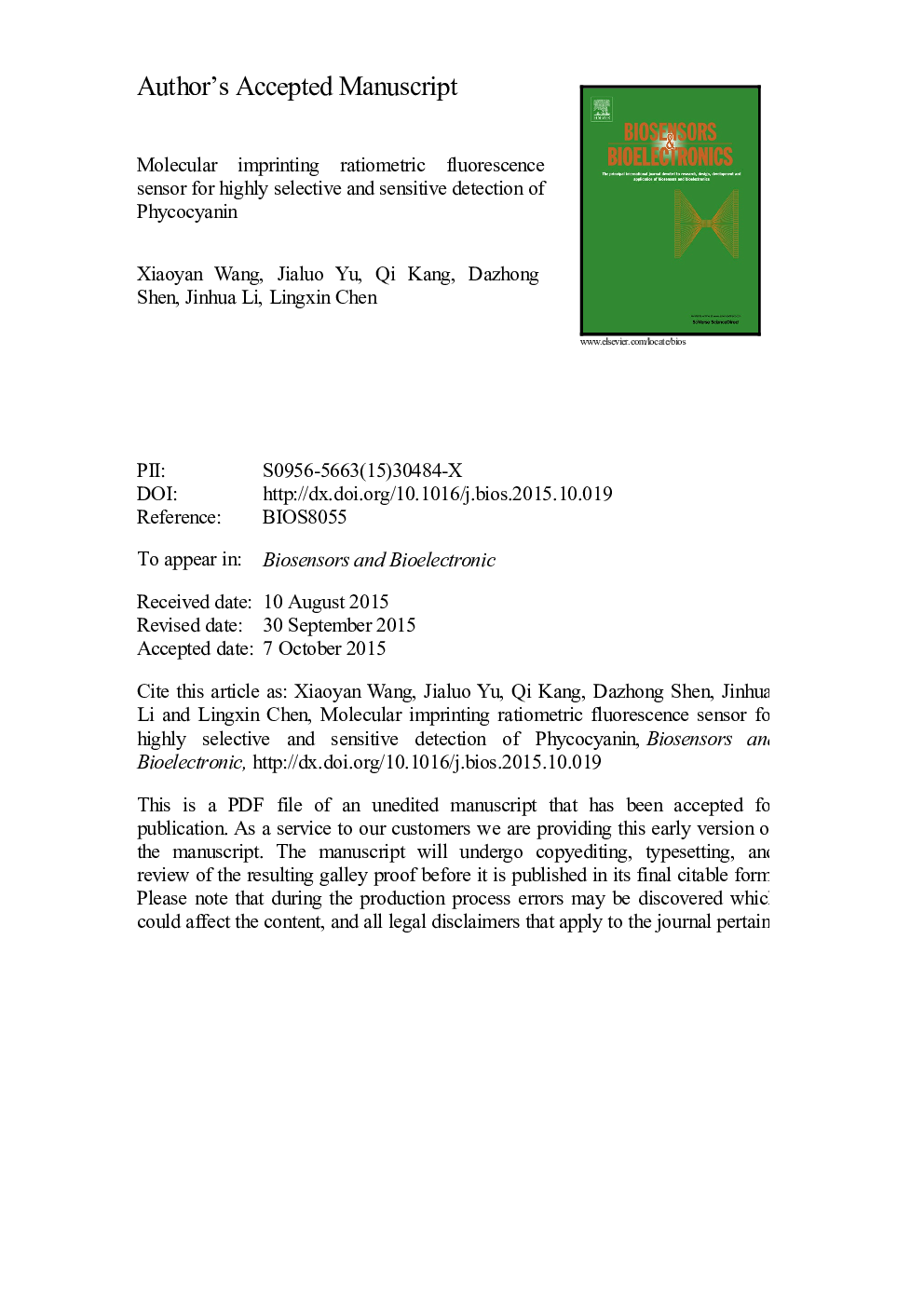| Article ID | Journal | Published Year | Pages | File Type |
|---|---|---|---|---|
| 7231653 | Biosensors and Bioelectronics | 2016 | 23 Pages |
Abstract
A facile strategy was developed to prepare molecular imprinting ratiometric fluorescence sensor for highly selective and sensitive detection of phycocyanin (PC) based on fluorescence resonance energy transfer (FRET), via a sol-gel polymerization process using nitrobenzoxadiazole (NBD) as fluorescent signal source. The ratio of two fluorescence peak emission intensities of NBD and PC was utilized to determine the concentration of PC, which could effectively reduce the background interference and fluctuation of diverse conditions. As a result, this sensor obtained high sensitivity with a low detection limit of 0.14Â nM within 6Â min, and excellent recognition specificity for PC over its analogues with a high imprinting factor of 9.1. Furthermore, the sensor attained high recoveries in the range of 93.8-110.2% at three spiking levels of PC, with precisions below 4.7% in seawater and lake water samples. The developed sensor strategy demonstrated simplicity, reliability, rapidity, high selectivity and high sensitivity, proving to be a feasible way to develop high efficient fluorescence sensors and thus potentially applicable for ultratrace analysis of complicated matrices.
Keywords
Related Topics
Physical Sciences and Engineering
Chemistry
Analytical Chemistry
Authors
Xiaoyan Wang, Jialuo Yu, Qi Kang, Dazhong Shen, Jinhua Li, Lingxin Chen,
